We met in one of those anonymous, windowless, below-ground hotel conference rooms in central London, a short walk from Charing Cross.
All of our expert panel are men, mostly towards the upper end of the spectrum one should describe as middle-aged. Mostly grey-haired and wearing grey suits, some with ties and some without. People you would barely notice on a train.
But these are some of the sharpest minds from the top echelon of decision-makers in the rail industry. Their challenge: to come up with the makings of a manifesto representing what the industry feels Secretary of State for Transport Patrick McLoughlin and Network Rail Chairman Sir Peter Hendy should prioritise.
The panel comes from widely different backgrounds and areas of expertise: passenger and freight operations, safety, regulation, consultancy and lobbying. The writers of all the open letters featured in this issue are all present, as well as members of the regular RailReview Editorial Board. But despite the varying backgrounds of the group, there was more than general consensus of what lies at the heart of the industry’s troubles. There was widespread agreement, and dissent only in the fine detail.
It can be summed up simply: an absence of long-term strategic thinking at the heart of the Department for Transport, and a lack of authority among the masters of the railway. There is no shortage of gifted leaders, but in a fragmented structure they are not in the most influential jobs.
One after another, the members of our panel concluded that there is an absence of authority at the top of the rail industry, and in particular at Network Rail. In an industry driven by complex processes and procedures put in place 20 years ago, too often the needs of the customer are secondary. Success is driven by a requirement to tick boxes rather than providing what the traveller wants.
Critically, rail’s leaders are failing to ensure that they dovetail into the wider context of the British transport system as a whole.
Panel members were keen to stress that the structure of the railway is far from broken - a doubling of passenger numbers, an enviable safety record and a rapidly increasing revenue stream are evidence of considerable success. But even greater success is being hindered by fundamental flaws…
“In our manifesto it is important to think about tone,” stressed Transport Focus Chief Executive Anthony Smith, who chaired the debate.
“If we write to Sir Peter Hendy and say ‘it’s all bust’, we are not going to make much progress. This provides an opportunity to accelerate change that is already happening, but not fast enough. If we get a sustainable long-term strategy with appropriate funding, everything else the industry needs to achieve can flow from that - the collaborative supply chain, the skilled staff to operate it, and ultimately the rekindled trust that passengers will have in the system. The tone is crucial.”
One of the key themes across the discussion was the subject of:
Accountability and Authority
The core of the debate was about who has the authority to lead the railway, and who takes ultimate responsibility for its direction. There are plenty of leaders, it was felt, but there is an alarming gap right at the top - a guiding authority with the ability to pull all the disparate groups on the railway in a single direction.
“The elephant in the room is that the Government now owns Network Rail,” argued Anthony Smith. “And the degree to which Network Rail is responsible for its own destiny is somewhat cloudy. The Government keeps asking it to do things, pronouncing changes during an election campaign.
“This reveals a lot about the state of the whole system. We have to reflect on what that means for the speed at which Network Rail can bring about changes.”
Ian Prosser, HMRI Chief Inspector of Railways and Director of Railway Safety for the Office of Rail and Road, responded: “You will not get that change until Network Rail has strong leadership from top to bottom. Until you have that, there will not a complete culture.”
Len Porter, until recently head of the Rail Safety and Standards Board, elaborated: “You cannot delegate accountability. You can delegate responsibility - get somebody to do something. But someone must remain accountable, to wield that authority. If the Network Rail board wants to offer serious leadership, then it needs to be accountable. At the moment it is not clear to me that it has authority or accountability.
“Do we trust the Network Rail board to lead? I think the answer is no. There is a muddle of accountability, responsibility, authority and leadership. Who actually has authority? It’s not Network Rail. It’s not the Rail Delivery Group and it’s not the Rail Supply Group, it’s not ATOC and it’s not RSSB. And it’s not the Department for Transport. It has to be somebody. It has to be clear. It isn’t.
“The Network Rail board is, in effect, accountable because it works for the Government. It therefore must have the authority to deliver.
“What the Government then cannot do is meddle with the actions of that board. The board would have to resign in its entirety - it was made accountable, but that accountability is being taken away by Government meddling, making the board’s role impossible.”
Stephen Joseph, Chief Executive of Campaign for Better Transport, said accountability had to filter through to platform level.
“Cultural change is absolutely critical. The people who are supposedly accountable and responsible are being told rubbish by the people on the ground. So the people at the top don’t actually know what is happening. You can have the greatest strategy, but on the ground there are breaches of basic safety rules.”
Joseph drew comparison with the health sector. “The NHS thought it ran safe hospitals until the Mid Staffordshire crisis. It then discovered that the culture on the ground was driven by targets which meant all sorts of horrible things were happening - individuals were treated very badly, so lives were lost. Accountability has to reach down to the grass roots. Unless people at the bottom think their work on safety matters, they’re not going to do it.”
It was agreed that solving the issues surrounding accountability and authority would allow the industry to achieve the next big priority:
Long-term planning
“There are lots of pressures on Network Rail,” noted Ian Prosser. “On health and safety maturity it scores 3 out of 5. It’s not broken - we have the safest railway we have ever had. But we are at a critical point. The railway is coping with real growth on infrastructure that was not built for it.
“I don’t believe the way that growth impacts on the infrastructure is fully understood. Network Rail is struggling with delivering both maintenance and renewals volumes, leaving it less space to prepare for that growth.
“It does not have the strongest safety culture. The pressures on it could cause failure - it only needs one small part of the organisation to fail for it to be really serious. We need stronger and more mature management for safety to improve.”
Len Porter: “The key problem is Network Rail’s asset performance. It still does not fully understand what it owns. It needs to know what effect improving its assets will have. That will reduce cost while improving safety.”
Anthony Smith: “This stems from the board of Network Rail. If you don’t have strong leadership at board level, and at chair level, the organisation won’t go anywhere. It’s my perception that’s how Network Rail has been in the last few years.”
Jeremy Candfield, Director General of the Railway Industry Association: “What Ian is saying about safety is in many ways similar to the view of suppliers. What matters is a predictable railway. A predictable railway is also a safe railway.”
Len Porter: “It does not understand the condition of the assets and the risks that poses. At Potters Bar we had bolts coming off a stretcher bar. They were known about but there was no system for understanding what the effect would be. It was an inherent problem and it was not being dealt with.
“Five years later came the Grayrigg derailment. You’ve got a similar problem. If you were an inspector, in winter, where would you start your inspection? You’d go to the risky bit at the end. You wouldn’t go to four and a half miles of plain line. They didn’t look. Then Bang! They didn’t even understand the risk was there.
“Arguably, several years on, the biggest risk on the railway is the civil asset base. It’s all down to knowledge that Network Rail does not have. That data would improve performance, reduce cost and increase safety. Its risk and reliability modelling remains poor.”
Stephen Joseph: “The most blindingly obvious thing coming out of this whole discussion is about the lack of long-term planning based on reliable information. You need a 30-year schedule. When I talk to suppliers, they say dealing with Transport for London and Transport Scotland is a much easier process, because they offer some sense of certainty about future direction. They have a clear view. That is an argument in favour of devolution, but it is also an argument for what needs to happen nationally - a strategic plan.”
If long-term strategic planning was achieved, it would enable:
Better engagement with suppliers
“The Southampton tunnel project had nearly a year taken off it by the early involvement of the contractor, Carillion,” said Jeremy Candfield.
“Procurement is an enormously powerful tool. It is capable of screwing up the industry when it is not used well. It is challenged by a lack of information and by the unpredictability of demand.
“Passenger rolling stock and electrification procurement resemble massive yo-yos going up and down without any degree of predictability to them. People wonder why the railway costs so much, and why it takes time to get people in place, trained and working well. This is fundamental to the industry.
“We need to tackle churn - the period of a few weeks before the spade hits the ground. In particular on track work and signalling. The amount of change which takes place in those final few weeks is very large. Typically 30%-35% of the project. The lack of supplier engagement at an early stage is a major driver of cost and time. Inefficient contractual relationships cost a huge amount.”
“Here is the risk,” said Neil Robertson, Chief Executive of the National Skills Academy for Railway Engineering. “Skills are the means to delivering. Half of the skilled people in the industry will leave in the next ten years.
“That is a worry. It also brings a great opportunity to change the culture, but also a great opportunity to push up costs if we don’t get it right. We think it will increase costs by 30% in the next decade - that is a conservative estimate. A shortage of skills increases wage inflation pressures. For the Government it also increases migration pressures.”
Chris Fenton, Chief Executive of RSSB: “I don’t see skills anywhere near high enough on Network Rail’s agenda. It has first-rate apprenticeship programmes. You could double them. I don’t see enough engagement with the supply chain on skills. I see other industries working much more effectively with their supply chains. But not Network Rail, or the industry as a whole.”
Len Porter: “In the oil industry, better engagement with suppliers brought costs crashing down. This is why I was so opposed to the Rail Delivery Group - it was just operators and Network Rail. They wouldn’t let the supply community in. That’s like the aviation industry saying it would let Ryanair and Easjyet to the top table, but not Rolls-Royce or Boeing.
“This gets to the heart of the leadership debate. Who is accountable? You have RDG telling Network Rail what to do! It is such nonsense. You couldn’t make it up. Network Rail has deeply entrenched views.”
Better engagement with suppliers should be followed up with:
Communication with customers (passenger and freight)
Enormous growth in passenger numbers is changing the nature of the railway. That growth is fundamentally shifting the economics, and a huge revenue stream is being generated. Yet passenger trust is being eroded, argued Anthony Smith.
“There are serious issues about value for money. Passengers do not care a jot who runs the railways. They want a value-for-money service that turns up on time, and which is safe and clean.
“But the industry’s ability to handle both short and long-term change is extremely worrying. The incentives are not there. As a result, a lot of the customer-facing experience is light years behind what is being provided in other transport sectors. The pace of change on ticketing is a particular issue. The railway is chronically poor at this.
“And London Bridge shows the industry’s hopeless ability to do big upgrades in a manner which does not irritate the customer. When the minister effectively has to put herself in charge of the project, you know things are bad.
“You have to give passengers a better voice, you have to give better value for money. You can’t just treat passengers as cash cows.”
Stephen Joseph of CBT largely agreed: “By 2020 the train operators in England and Wales will be producing £2 billion a year surplus to the Government. You could call that a passenger rail tax. People will want to know what is done with that.
“The ticketing story is just dire. We are not even labelling ticket machines to tell people that other ticket machines on the same station are available and can give cheaper prices for the same journey. This is a nonsense.
“We have to find a way that makes all people on the railway think passengers (and freight users) come first. We have to find a way in which the industry can innovate, without going at the pace of the slowest.”
Anthony Smith: “There is a basic trust issue. The average passenger does not think the rail industry is on his or her side. It is out to get you, out to cheat you. You feel like a victim, not a customer.”
Andrew Meaney, from Oxera, argued that this is further illustration of the lack of accountability. Oxera advises and lobbies on economic issues connected with competition, finance and regulation. Its customers include the Department for Transport.
“The DfT doesn’t have a rail budget, it just has a budget. That £2bn surplus comes mainly from the South. It’s not used to reduce rail fares in the South, and it’s not used to make services in the South better. It’s used elsewhere - to prop up services in the North.
“The customer is now the main funder, rather than the decision-maker. The decision-making is getting further away from the main source of revenue, not closer. And the customer has no engagement with the regulator either. How do you engage the customer when what they are paying for is not the service they are actually being given? They are paying for somewhere else in the country. There must be a better way to do this than taking money from London commuters and then spending that money elsewhere.”
Nick Gallop, Managing Director of rail freight consultant Intermodality, gave a warning: “Be careful what you ask for. If passengers dictated policy you would not have ended up with Javelins travelling to east Kent. Passengers would not have chosen to pay extra for that service.
“But the Javelins delighted passengers, once they found they could get into London in not much more than half an hour. If you just use an airline yield management system to dictate what passengers pay, it’s not enough to bring about change.”
Len Porter related the issue of passenger revenue to the reliability of the whole rail system: “Other nationalised railways think whole-life, whole-cost. Because they can. Our railway doesn’t. Therefore we build at low cost, and build either unreliability, or reliability for a short life, into the rolling stock. Combine that with a lack of reliability modelling in the infrastructure and you get an unreliable system. That’s why the passenger feels the pain.
“The solution is about system risk and reliability. It’s about delivering highly reliable infrastructure and highly reliable trains. We are not geared up for that… by a long way. We have to go back to first principles.”
On freight, Nick Gallop from Intermodality took the lead. The consistent theme with the rest of the railway was clear.
“Information is a problem. The information that retailers, suppliers and distributors need to choose rail should be out there. It isn’t. It seems daft that large companies should have to go ferreting about to find a website that a student from the University of Southampton has built in his spare time, to see where every freight service is and how it is performing [http://www.realtimetrains.co.uk].
“If the outside world knew what freight is running by rail - its customers, origins, destinations and timekeeping - a lot more people would use rail as a matter of course. But the lack of information means they come up against a brick wall. Whereas they can just order a lorry, know what it will cost and when it will arrive.
“Beyond that is the question of access. A lot of Tesco and other traffic is covered by Government grant. This says a lot about the freight operating companies - they know what the road price is, they know what the grant would be, and unsurprisingly the cost of the rail service they quote comes out as the price of the road service plus the grant. So the freight operators are scooping up a grant they probably don’t need.
“There is an issue about the cost of physically connecting into the rail network. It should not take £5 million to put in a set of points. We have seen some major projects that would inject dozens of trains a day scared away because the engineers and quantity surveyors have put in contingencies, risk and optimisation bias, then come up with a price which bears no relation to what actually gets delivered at ground level.
“Network Rail’s processes frighten off hundreds of millions of pounds of work. The customers hire some lorries instead. We need to look at different methods of funding this. A new entrant should not just pay the £50,000 a year track fee, but agree a long-term contract that includes an element of the capital cost of new access, a bit like a mortgage. That would get a lot more people onto the network.
“If there is an elephant in the room it is luggage - the freight component of the passenger business. We are driving out all the spaces to put it.”
Gallop pointed to improvements on the strategic freight network as a huge achievement. In particular, he highlighted gauge clearance for larger containers through the Southampton tunnel, which is critical for port access.
Now, he said, a new generation of secondary routes for freight must be in place, so that more freight does not interfere with the increasingly stressed passenger network.
Anthony Smith: “This is again about predictability. Freight operators are actually quite passive users compared with passengers. The only thing they really must have is predictability. If they know in advance about engineering work or speed restrictions they can work around it.”
Chris Fenton: “Look at the attempt to get freight back into Euston, ten years after the mail trains left. You wouldn’t believe the amount of resistance from Network Rail. There are very few incentives for Network Rail to get freight in there. Freight is never a priority for route MDs.”
Len Porter: “It’s back to risk. Understand the asset, increase certainty, reduce risk. It’s not rocket science.”
Achieving all of these objectives allows for the most important issue to be resolved, and it was a subject that came up often in the debate:
Wider transport strategy
Andrew Meaney leads the team of transport economists at Oxera. His views back up the operational perspectives from passenger and freight operators, and the long experience of Len Porter from RSSB, who now sits on the boards of various rail companies.
“In other sectors we have seen a move away from five-year financial Control Periods to a system where the infrastructure providers are required to get customer engagement on a long-term vision for their assets,” said Meaney. “This is the case for water and energy. It reflects the nature of the assets - for example, the need to build additional reservoirs.
“We’ve talked about supply chain and skills uncertainties. In other industries suppliers are able to respond to long-term certainty by reflecting that in their prices.
“A long-term vision presents a set of trade-offs. Then you get a political and customer reaction to that set of trade-offs, from which politicians choose the one which best suits their needs. But today people like ORR have to take the policy decisions, and they don’t consult customers.
“It’s not a Stalinist thing. It’s the industry coming forward with its stakeholders and saying where it is heading. The money that comes in will determine how far it gets in that direction.
“The Sunday Times has been reporting that the Government intends to curtail Network Rail expenditure within the current five-year structure. That would be such a retrograde step, going right back to the British Rail era. Highways England now has a five-year funding structure - at least on capital spend. Rail has had that for 20 years and benefited massively from it.
“With that in mind we need to know from Government what the long-term balance is to be between passenger funding and taxpayer funding. Is it 75%-25%, 60%-40%, or is the aim to reach zero from the taxpayer? That kind of clarity has disappeared. We have only an indication that fares will not go up in real terms.”
Len Porter: “This gets right to the heart of everything, I feel. In the Department for Transport, our rail people are only thinking about rail. If we don’t start thinking properly, electrically powered driverless cars will be here before we have thought fundamentally about what we want rail to achieve. We cannot just plan for rail in isolation. We just don’t get it right.”
Chris Fenton: “The question is: who does that thinking? Coming into the industry from outside, I see too little leadership. And at the same time, too much ineffective leadership. When anybody proposes a long-term choice, you have either 20 people offering leadership or none at all. I don’t see any coherent view being put together.”
Stephen Joseph: “DfT is hopeless at long-term strategic planning. It is busy assessing the idea of a road tunnel under the Pennines independently from HS3. The strategy for the A14 road does not even consider the Felixstowe to Nuneaton railway line. As a bare minimum there should be a joining-up of the roads strategy and the High Level Output Specification in the railway.”
Anthony Smith: “Stephen Hammond’s open letter is talking about radical change. That’s very different from our discussions today. He says Network Rail should be broken up. I’ve not heard a call for radical change from any of you.”
Len Porter: “He’s saying Network Rail should be made better by breaking it up, rather than making it better by getting it to do things differently.
“There are some superb people in rail. But they are not on the Network Rail board. The people with great management, leadership and technical skills are not at the heart of the railway, they are working for other companies. The people who could do a great job at the top of Network Rail are not currently in Network Rail. Many of them would not want to be there - that is the problem.”
Conclusions
The clock struck midday. As the panel packed their bags and headed off to their next meetings, the murmured discussions in twos and threes were all about how much consensus had been found. This seemed to surprise them.
The message for Sir Peter Hendy and Patrick McLoughlin has, at its core, the need for more authoritative leadership and a clear chain of command. Appointed as a servant of the Government, creating that is not in Hendy’s remit. Nor is dictating a secure long-term vision for the entire industry, although he can influence it.
There was no appetite for radical overhaul of the structure of the industry. But there was agreement that it is opaque and disjointed, lacking clarity and vision, and that this is constricting rail’s development. Not just in terms of passenger or freight growth, but in terms of its central role in both regional transport systems and the wider national economy. Other countries, it was felt, do this better.
But some more immediate changes are within Hendy’s grasp: getting effective railway leaders into the most important posts at Network Rail; fixing staff training for the long term; reforming a fragile procurement process to cut costs, increase efficiency and improve safety.
In short: listen to the customers, then lead the way to a long-term vision for the rail industry and its place in our society, dragging in your wake some indecisive politicians, process-driven civil servants and those in the industry with deeply entrenched views.
That’s a tall order. No pressure then.

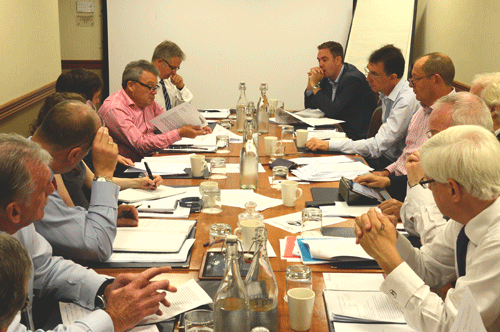
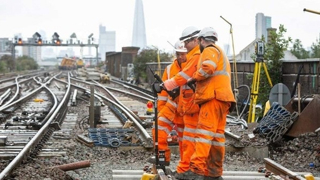
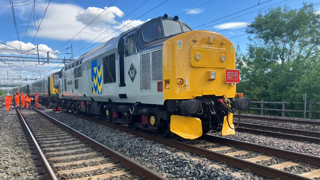

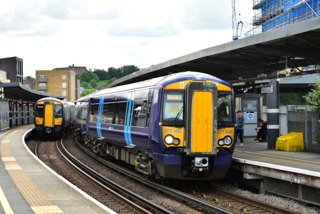
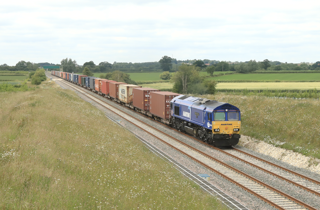







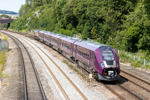


Login to comment
Comments
No comments have been made yet.